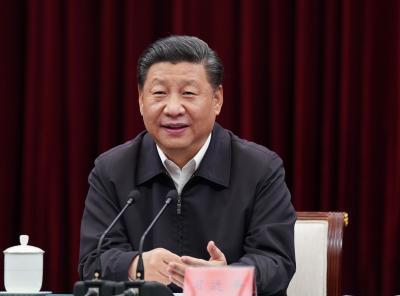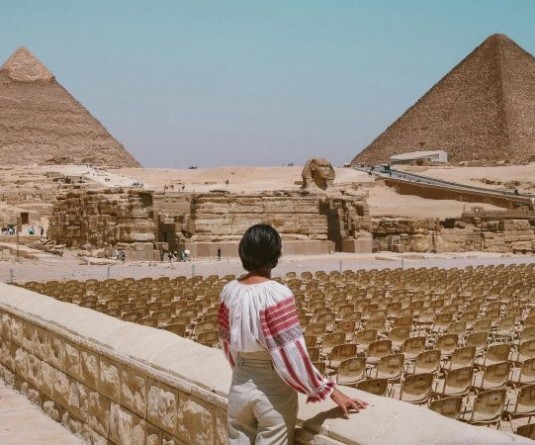Has Xi Jinping found the answer to Hong Kong?

By Akhil Bhardwaj
IANS | August 11
What started as a demonstration by 12,000 citizens against a proposed legislation for extradition of criminal undertrials to China has escalated into a daily assembly of over two million protesting against Chinese ainterference' in Hong Kong, an examination of police brutality under the gaze of international press and a demand for full democracy. Meanwhile, Chief Executive Carrie Lam's counter-mobilisation strategy is reduced to maintaining radio silence. Not only did Lam lose all credit amongst the pro- democracy camp having described the June 12 protest as a "riot", she has also lost support of the pro-Beijing (dare I say anti-democracy?) section of Hong Kong having suspended the extradition bill that triggered the protests. Additionally, there have been anonymous accounts of the Hong Kong police expressing resentment at being forced to play a violent role in what should have been a political debate.
Meanwhile, Beijing has been content to signal its superior capability to use force (Hong Kong law allows for the administration to call upon the People's Liberation Army in tackling issues of "public order"). Many are disconcerted by the restraint being exhibited. Particularly following the incident last week where a group of demonstrators broke into the legislative house, vandalised the official emblem of Hong Kong by blackening out the name of mainland China, it was widely believed that the PLA would be called in to quash the protests. However, this has not materialised. Why? I believe, Xi Jinping has been learning from networked mobilisations around the world. Arguably, Mubarak lost Egypt the day he let loose his militia on horseback - scattering protestors in Tahrir Square - killing a dozen people. Despite the internet shutdown, the incident was broadcast live across the world - voices against his regime grew to a din and the rest is history. While there is no threat to Jinping's presidency, the threat of economic sanctions and perhaps a trade exile against China motivate him to avoid a modern Tiananmen.
Hong Kong 2019 - A networked movement
Much like the 2014 Occupy Protests in Hong Kong, the Arab Spring and the Occupy Wall Street Protest in New York, Hong Kong 2019 has relied heavily on the internet for mobilisation and organisation. Such anetworked movements' leverage platforms such as Facebook, Twitter, Whatsapp to achieve quick amplification and scaling, set in place informal decision making structures allowing real-time tactical moves, and organize logistics. The protesters in Hong Kong have exhibited organisational capabilities that can be traced to learnings from the failed 2014 Occupy Protests. A 20- year old student leader says, "During the Occupy protests, most of us didn't think about protecting ourselves, we used Facebook, Instagram and WhatsApp to spread messages. But this year, we see that freedom of speech is getting worse in Hong Kong,".
Since 2014, WhatsApp has introduced end-to-end encryption. Along with other P2P clients like Signal, Telegram and Firechat it afforded organisers the ability to communicate with large numbers in a more secure forum than public Facebook groups and Twitter handles. Complimentary offline measures such as using disposable cell phones, transacting in cash, purchase of single-fare tickets on public transport and even simply keeping faces covered during protests has helped prevent surveillance and thwarted counter-mobilisation efforts.
In addition, as identified by Zeynep Tufekci in her book Twitter and Tear Gas a key feature of radically networked movements is that they are often aleaderlessa¿. The informal and horizontal nature of the mobilisation means no individual(s) can claim formal leadership over the protest. Unlike the 2014 movement which was quashed through arrests of leaders, while the 2019 movement has witnessed numerous arrests of prominent figures, mobilisation hasn't been impacted. As such, while activists and organisations such as Joshua Wong and CHRF have thrown their weight behind the cause, by design no individual has claimed leadership of the movement.
The State's response
Early statements of the Hong Kong Administration such as a memo dated June 9 described the protests as "an example of Hong Kong people exercising their freedom of expressiona". However, within three days, the rhetoric and force employed by the Administration radically altered. Rubber bullets were fired at protestors and Lam termed the congregation a "riot". To date police action has resulted in four deaths, 230 injuries and over 560 arrests.
In addition to these measures on the ground, the Administration has taken steps online. Attempts have been made to individually penetrate channels of communication and intercept or corrupt information flows. On a macro level, the Administration has sought to spread misinformation amongst protestors - Lam's announcement that the extradition bill is "dead", while merely suspending it, is a classic example. In addition, the founder of Telegram, Pavel Durov has stated publicly that he believes recent outages were results of DDOS attacks by "a State actor". However, I believe Beijing's counter-mobilisation effort go deeper.
By emphasising the discolouration of the national emblem as an act of "radicalisma and a "threat to national sovereignty", the State owned media has been instructed to whip up nationalistic fervour amongst citizens of mainland China. After an image of the Chinese flag thrown in the ocean surfaced online, the propaganda machine swung into overdrive -starting the hashtag #TheFiveStarRedFlagHas1.4BillionProtectors. The hashtag caught on - finding support from celebrities like Jackie Chan, while former Hong Kong chief executive Chun-ying announced a reward of 1 million HKD for information about the "culprit".
Creating imagined enemies out of protestors is a tool of psychological warfare that could easily turn into an intra-ethnic conflict. And we are already seeing the first signs of this - A Chinese man assaulted pro-democracy protesters in the Hong Kong Airport. The incident was given a political spin and reported as evidence of growing radicalism in the protesters. More such reports have emerged. Perhaps the most alarming is the report from the University of Queensland in Australia, where a peaceful march in support of the movement in Hong Kong was attacked by pro-Chinese students. This was followed by an online doxxing attack against protesting students. Most tellingly, the Chinese consul-general, Xu Jie, has praised the "patriotic behaviour" of the attackers.
These are not isolated incidents. Xi is attempting to enlist the citizens of China in his attack on Hong Kong by playing on nationalism. He hopes to incite violence amongst the well organised pro- democracy protesters, giving him the moral authority to send in the PLA. Has Xi found the perfect tool to foil the surge of networked protestors or is China heading towards another Cultural Revolution? We will know soon - and it may set a precedent for counter-mobilization around the world.
(Akhil Bhardwaj is a practicing lawyer and a student of public policy at the Takshashila Institution. The views expressed are personal. He can be reached at akhilbhardwaj92@gmail.com)





